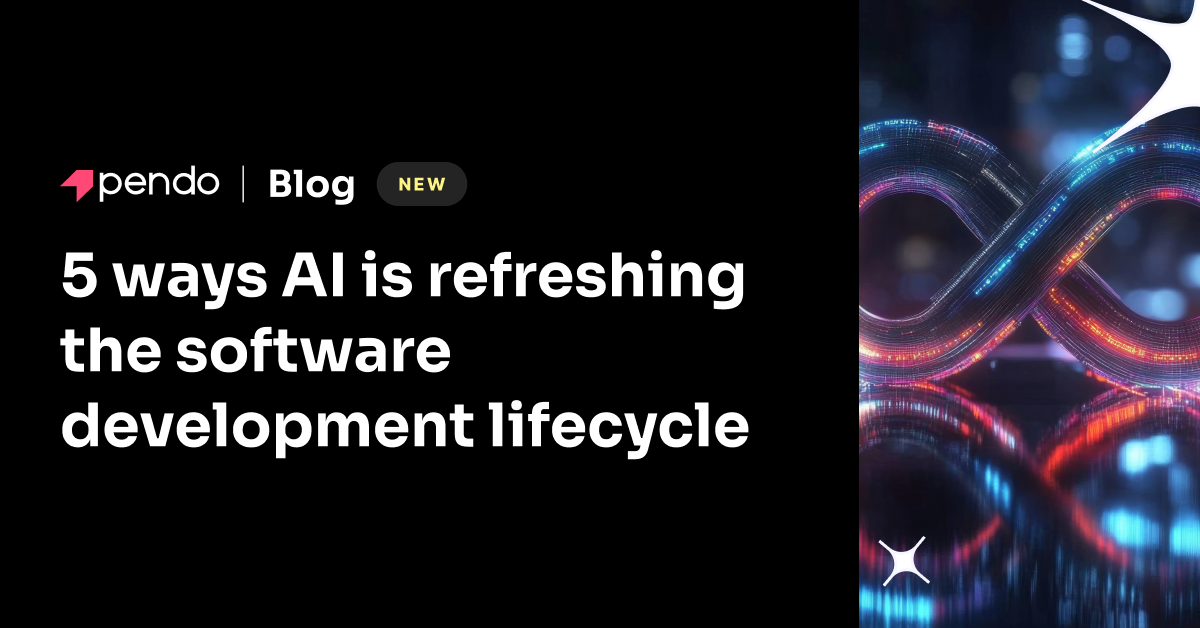Good teams are getting weighed down by old ways of working.
AI has made “coding” more accessible to the masses, with no-code development tools, citizen developers, and AI copilots accelerating development at unprecedented speeds. But here’s the problem: A truly great product is so much more than code.
As development becomes faster than ever, we’re witnessing an alarming trend. The software experience crisis (which already costs enterprises billions in wasted productivity and failed digital initiatives) is about to get even worse.
The traditional SDLC is riddled with pitfalls
AI has democratized software creation, but it hasn’t solved the underlying challenges of building software that people actually want to use. In fact, it’s making them worse. Here’s why:
- Quantity over quality. AI-powered development tools are increasing the volume of software being created while simultaneously lowering the quality of software experiences. When anyone can spin up an application in hours, the temptation is to build first and think about user experience (UX) later.
- Integrations. The modern enterprise’s disjointed, siloed software landscape makes it nearly impossible to use AI effectively. Agents, chatbots, and digital assistants only work when they can access all necessary data sources. If your essential data is scattered across dozens of software solutions, you’ll never realize AI’s full potential.
- Lagging adoption. We’re already seeing that 80% of software features go unused, and nearly half of all business software sits idle, wasting $44 million monthly for the average enterprise. AI-accelerated development threatens to flood organizations with even more tools that employees won’t adopt.
To avoid these pitfalls, enterprises must build and manage the right software experiences with an AI-ready software development lifecycle (SDLC).
Why the traditional SDLC can’t keep up
The old SDLC was never built for the speed and scope of AI. Whether you’re building customer-facing applications or modifying internal software, the traditional SDLC leaves companies blind to necessary improvements and user needs.
The linear approach (plan, design, develop, test, deploy) assumes you can predict user behavior and needs upfront. But in reality, 70% of digital transformation initiatives fail due to adoption or experience gaps, not technical problems.
The traditional SDLC also lacks the feedback loops necessary for rapid iteration. By the time you discover that users aren’t engaging with your software, you’ve already invested months of development time and budget. There’s no vibing to be found in this lifecycle:
The modern SDLC must be iterative and user-centric
The modern SDLC transforms development from a linear process into an iterative cycle that keeps users at the center of every decision.
Can you cut or condense steps to go faster? AI lets you design, discover, build, and test software at the same time. And with an agentic, digital workforce, companies are automating parts of this process.

Here are five trends we’re seeing:
1. More automated planning
You can now use agents (like this PRD agent from ChatGPT) to build documentation and strategy with a few simple prompts. But even simpler than PRD templates, product teams are often turning to AI note takers and meeting assistants to transcribe, summarize, and create action items in seconds.
2. More iterative discovery, design, and development
It used to take weeks to go from idea to working prototype. Now, genAI and agents (like Lovable and Cursor) can write, design, code, and edit prototypes in minutes, dramatically shortening this process.
3. A complete overhaul of testing
AI can automatically generate test cases based on code, requirements, and user stories, reducing how much time engineers and PMs spend crafting tests—and including edge cases that we can forget about. Software is also becoming self-healing, where AI-powered scripts automatically adapt to changes in the app.
4. Voice of the customer automation
Agents and AI-powered tools can now collect, organize, summarize, and triage user feedback in real-time. Sorting through (and prioritizing) feedback used to take product teams days, but AI-powered VOC tools like Pendo Listen automatically handle triaging, analysis, and prioritization. Product teams are also using conversational interfaces, like Listen’s Feedback Agent, to ask questions and get answers from feedback.
5. Deeper insights and signal
Companies are beginning to use AI to extract insights from qualitative data, recommend which metrics they should be monitoring, build dashboards, and better help them understand data. At Pendo, we use Forwrd’s predictive analytics and the insights within Pendo Analytics.
We don’t know what the new SDLC will look like, and AI will change this as quickly as the rest of the world. This is simply Pendo’s best guess, given what we’re seeing from customers and how we’re operating internally.
5 signs your company is struggling from a software experience problem
Check it out
Start sharpening your software experience
Companies that continue relying on traditional development approaches will drown in unused, poorly designed software. But those that embrace the modern SDLC and invest in integrated software experience management (SXM) will rise above the competition.
The question isn’t whether AI will change how we build software. The question is whether you’ll adapt your development lifecycle to harness AI’s power while maintaining the user focus that drives real business outcomes.
Game News
Berita Olahraga
News
Berita Terkini
Berita Terbaru
Berita Teknologi
Seputar Teknologi
Drama Korea
Resep Masakan
Pendidikan
Berita Terbaru
Berita Terbaru
Download Film
A gaming center is a dedicated space where people come together to play video games, whether on PCs, consoles, or arcade machines. These centers can offer a range of services, from casual gaming sessions to competitive tournaments.
